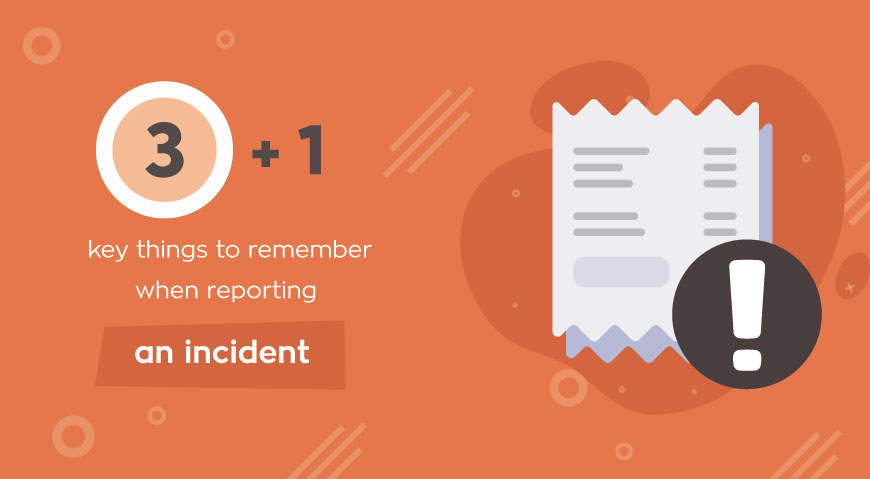- Posted by: blignos
- Published: 17-05-2023
- Category: Security articles
3+1 key things to remember when reporting an incident
I'm sure you've seen many incidents reported in an "odd" way. I'm also sure that being on the guard’s side, you know from experience that incidents, 9 times out of 10, are not reported in the best possible way. Sooner or later, in order to aim for a successful outcome, either as a manager or as a guard, you’ll have to work on your incident reporting process. This can be validated if you think a little bit more about the importance of adequate logging.
It can be said that a detailed, adequate and correct recording of a problem is perhaps more than 50% of its solution. Breaking down the process of solving a problem, and even better, the life cycle of an incident, we will see that it consists of the following:
- 1 Identification & logging
- 2 Prioritization
- 3 Investigation & Diagnosis
- 4 Resolution & Recovery
- 5 Closure
On a quick side note, except for step 1, which includes reporting the incident, during both 2 and 3, managers rely on the information they receive from the field to initiate step 4, resolution, recovery and closure. The more detailed information managers identify in the incident, the more targeted they will be in guiding subsequent actions.
Ηow to write a detailed incident report
A report should therefore meet a few simple requirements to give the manager all the information needed to take the next steps - so what would one need to initiate the process?
- 1 Don't forget to include location information or location stamp.
- 2 Rely on what you saw
- 3 Add audiovisual material
- 4 Take a last look before you send it
- 5 Closure
 Perhaps the main opponent for dealing with the incident is time so having the manager know the exact location where the evidence was found is the first step towards a quicker resolution. Always the target is the last step of the cycle anyway.
Perhaps the main opponent for dealing with the incident is time so having the manager know the exact location where the evidence was found is the first step towards a quicker resolution. Always the target is the last step of the cycle anyway. Try to record the events you observed as you observed them, ideally avoiding interrupting the recording process several times so as not to falsify the event.
Try to record the events you observed as you observed them, ideally avoiding interrupting the recording process several times so as not to falsify the event. Even if this is not possible in many emergencies, counter some parts of your written description with audio messages, photo captions and videos. An image for a thousand words.
Even if this is not possible in many emergencies, counter some parts of your written description with audio messages, photo captions and videos. An image for a thousand words. Last and perhaps most importantly, do a quick review of what you recorded. It is very likely that in your haste you fell into typos or forgot to add something that on a second glance seemed necessary.
Last and perhaps most importantly, do a quick review of what you recorded. It is very likely that in your haste you fell into typos or forgot to add something that on a second glance seemed necessary.
By perfecting step 1 identifications & logging, you have created the perfect conditions for immediate prioritization according to the importance of the incident, quick mobilization and resolution in less than half the time.
From there it is up to the manager, having access to a centralized database visualized in an incident management grid, to take the necessary steps and set the right conditions to be proactive and not just reactive.
For a creative discussion feel free to contact us at success@qrpatrol.com
Written by Michael Parmazis

















